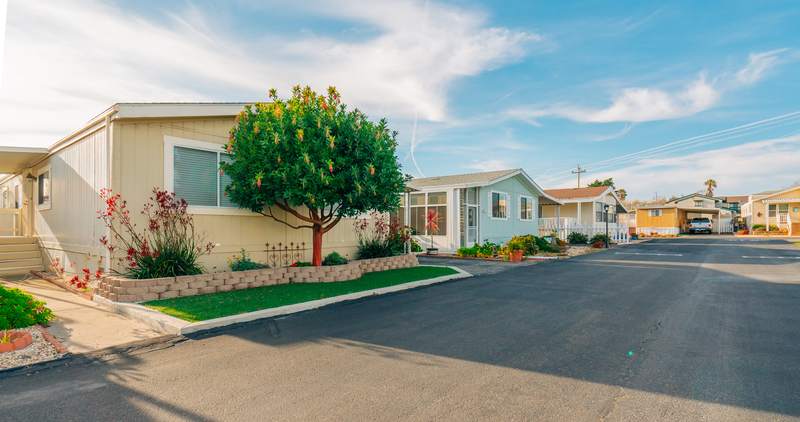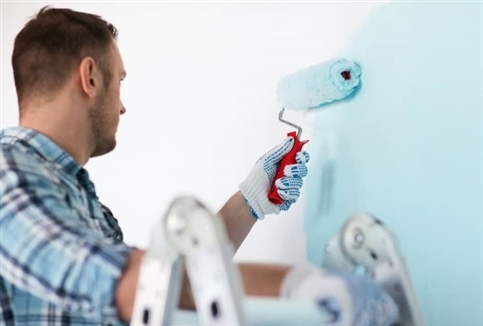A cash-out refinance allows you to both refinance to a new mortgage loan and nab an extra chunk of cash that you can use for anything – from paying for home renovations and a child’s college tuition to consolidating high-interest-rate credit card debt.
A VA cash-out refinance is similar, only you’ll be refinancing a VA loan – a mortgage with unique terms for qualified borrowers. Is applying for a VA cash-out refinance a smart move? Read on to find out if this is an option for you.
VA Loan Overview
A VA home loan is a type of loan insured by the U.S. Department of Veterans Affairs. These loans are attractive because they require no down payment. That makes it easier for cash-strapped borrowers who are struggling to scrape together the thousands of dollars they’d otherwise need for a down payment.
There is a catch, though: These loans are not available to all borrowers. You must be an active-duty member or veteran of the U.S. Armed Forces, National Guard, Coast Guard or Reserves. You can also qualify if you’re a surviving spouse of a veteran who died on active duty or who suffered a service-connected disability. If you are a surviving spouse, you won’t qualify for a VA loan if you have remarried.
What Is A VA Cash-Out Refinance?
A VA cash-out refinance allows eligible borrowers to tap into their home equity and use cash to pay for home improvements, pay off outstanding debt or fund another expenditure of their choosing.
In this type of VA refinance, you’ll refinance an existing mortgage loan into a new VA loan. But you’ll refinance for more than what you owe on your current mortgage, taking the extra amount as cash that you can spend however you’d like.
Say you owe $200,000 on your existing mortgage and your home is worth $400,000. You can refinance to a new VA loan of $280,000, receiving the extra $80,000 in cash. You can then do whatever you’d like with that money. You might choose to consolidate credit card debt that comes with high interest rates, fund a kitchen remodel or cover your child’s college tuition costs.
You can refinance any loan type into a VA loan, if you meet the requirements for one of these mortgages. You can refinance from an existing VA loan to another VA loan or from a conventional mortgage – one not insured by a government agency – into a new VA loan.
What’s Your Goal?
Buy A Home
Discover mortgage options that fit your unique financial needs.

Refinance
Refinance your mortgage to have more money for what matters.
Tap Into Equity
Use your home’s equity and unlock cash to achieve your goals.
How Does A VA Home Loan Cash-Out Refinance Work?
The process of closing a VA cash-out refinance is similar to the standard refinance process.
First, you’ll need enough equity in your home. Equity is the difference between what you owe on your mortgage and what your home is worth. If you owe $150,000 on your mortgage and your home is worth $350,000, you have $200,000 in equity.
The amount of equity you have matters when determining how much cash you can take out with your VA cash-out refinance. You can’t borrow more than your equity amount. Most lenders won’t allow you to borrow up to your full equity level, either.
Say you have $100,000 in equity and you owe $200,000 on your current mortgage. Your lender might allow you to refinance to a new VA loan of $270,000. You’ll then receive the extra $70,000 in the form of a single lump-sum payment. You can spend this money however you’d like.
As with all refinances, you’ll have to pay closing costs for a VA cash-out refinance. How much you pay varies, but you can expect to spend from 2% to 6% of your loan’s value in closing costs, including your loan’s VA funding fee, a charge that the VA charges on all VA loans. For that $270,000 loan, then, you can expect to pay from $5,400 to $16,200 for closing costs. You can usually roll these costs into your loan so that you don’t have to pay them upfront.
View Your Refinancing Options
Find a refinance lender that will work with your unique financial situation.
VA Cash-Out Refinance Guidelines
To apply for any VA loan, including a VA cash-out refinance, you’ll need to show your lender your VA Certificate of Eligibility (COE). This document, issued by the VA, shows that you meet the service requirements of qualifying for a VA loan.
You must also meet any credit and income requirements of your lender. The VA does not originate loans. It only insures them. To take out a VA cash-out refinance, then, you’ll need to work with a private mortgage lender. That lender might require a certain FICO® credit score and debt-to-income ratio (DTI), both of which will vary by lender.
Your lender might also request copies of financial documents to prove your income level, such as copies of your last two paycheck stubs, last 2 months of bank-account statements, last 2 years of income-tax returns and last 2 years of W-2 forms.
You might also need to pay a VA funding fee, a one-time charge for closing a VA loan. If it is the first time that you are taking out a VA cash-out refinance, this fee will be up to 2.15% of your loan amount. If you have taken out a VA cash-out refinance previously, you’ll pay a VA funding fee up to 3.3% of your loan amount every additional time you refinance.
How To Get A VA Cash-Out Refinance
Ready to apply for a VA cash-out refinance? Here are the steps to take:
1. Compare VA lenders. You’ll need to work with a mortgage lender to close a VA cash-out refinance. You can shop around with several lenders to find the one who will give you the lowest interest rate and charge the lowest closing costs for a refinance. You can work with any lender licensed to do business in your state. Most mortgage lenders offer VA cash-out refinances.
2. Obtain a COE. You’ll need a COE from the VA stating that you meet the military service requirements of a VA loan. You can request your COE, and provide the information necessary for it online or ask your lender to request a COE for you. You can also download VA Form 26-1880, fill it out and mail it to your regional VA loan center.
3. Fill out a refinance application. Next, you’ll fill out your lender’s loan application form. You’ll need to provide such information as your address, full name and Social Security number. You’ll also have to provide information about your income and debts and give your lender permission to check your credit score and credit reports.
4. Complete a home appraisal. Your lender will send an appraiser to determine the market value of your home. This matters because you need enough equity in your home – the difference between what you owe on your mortgage and what your home is worth – to cover the amount of cash you want from your VA cash-out refinance. If your home isn’t worth enough, you might not be able to take out a refinance loan for the amount that you planned.
5. Get your cash. If your lender approves your VA cash-out refinance, you’ll sign any required documents and receive your cash in a lump sum, often deposited directly in your bank account. You’ll then begin making your monthly payments on your new loan.
VA Cash-Out Refinance FAQs
Questions about VA cash-out refinances? Here are answers to some of the most common.
The Bottom Line
If you qualify for a VA loan and need a quick influx of cash, a VA cash-out refinance could be a good option. This refinance option can be especially beneficial if you use the money to complete projects that increase the value of your home.

Dan Rafter
Dan Rafter has been writing about personal finance for more than 15 years. He's written for publications such as The Washington Post, Chicago Tribune and Wise Bread.












